USC Catalogue 2020-2021 [ARCHIVED CATALOGUE]
| | | | Application deadline: December 1. The doctor of philosophy in the Art History program normally requires at least three years of course work and two years of dissertation research. Applicants may be admitted directly into the program after receiving the BA Other applicants may already hold an MA in art history or the equivalent from USC or another accredited school. Every student will be subject to departmental screening procedures, which involve periodic review by the art history graduate committee. The committee may recommend at any time, after a written warning, based on a student’s grades, evaluation of instructors or rate of progress toward the degree, that a student be dropped from the program. Such recommendations will become effective at the end of the semester during which the recommendation is made. Course RequirementsMaster of Arts and Doctor of Philosophy units total 60. Up to 32 master of arts units from USC or 16 from other institutions may be transferred with approval of the faculty. Transfer work applicable to the PhD program must have been completed within 10 years of the date of application. AHIS 500 , or equivalent, is required of all graduate students. Four units are for work on the dissertation. (Two units of dissertation credit each semester — including summer — for a minimum registration period of two semesters.) Foreign Language RequirementsAll candidates must pass reading proficiency examinations in a minimum of two languages, normally French and German or the requisite languages in Asian art. Substitutions and/or additions may be made with faculty recommendation and approval of the chair of the Art History Department when appropriate to the student’s program. Additional foreign language beyond the minimum may be required depending on the student’s program of study. All language requirements must be completed prior to taking the qualifying exam. Screening ExaminationsPassing the following procedures are prerequisite to continuation in the doctoral program, as stated in the departmental graduate guidelines. Before the student has completed 24 units, the first-year examination must be passed. Before the student has completed 48 units, the second-year review must be passed. Qualifying ExaminationAt the end of the second year, the student will nominate a five-member qualifying exam committee for the qualifying examination that includes one member from outside the Department of Art History. The student is expected to pass the qualifying examination in a major field and satisfy the requirements for the minor and outside fields by the end of the third year. Forms for permission to take the qualifying examination must be submitted at least 60 days before the date of the scheduled examination. The written portion of the examination will be followed by an oral examination. The oral examination will be given to discuss in greater depth the student’s knowledge of the dissertation proposal; the oral lasts approximately two hours. After passing the qualifying examination, the student will be admitted to candidacy for the PhD. DissertationFollowing the completion of the qualifying exam, the qualifying exam committee will be reduced to three members, including one member from outside the department, who will guide and finally approve the dissertation. PhD Art History The doctoral program in the History of Art at Stanford is relatively small, affording graduate students the opportunity to work intensively with individual members of the faculty. Program OverviewThe Doctor of Philosophy degree is taken in a particular field, including Film & Media Studies, supported by a strong background in the general history of art. Doctoral candidates also undertake collateral studies in other graduate departments, or in one of the University's interdisciplinary programs. The Department of Art & Art History offers M.A. and Ph.D. degrees, although the Master of Arts in Art History is only available to doctoral students in Art and Art History, as a step toward fulfilling requirements for the Ph.D. The Department does not admit students who wish to work only toward the M.A. degree. Size of the ProgramThe Department admits approximately 4 to 7 students each year to the Ph.D. program. Time to CompletionThe Ph.D. student's formal progress to degree is reviewed at the end of the second year (first year for those entering with an M.A.). By the end of the third year, a dissertation topic should be selected and a proposal written. After all course requirements are met and the proposal is approved, the student begins research and writing of the dissertation. The dissertation must be completed within five years from the date of the student's admission to candidacy for the Ph.D. degree. Financial AidArt History Ph.D. students normally receive a financial support package covering five years of graduate study. Funding sources include departmental fellowships, teaching assistantships and research assistantships. Additional funding covers summer language study as well as summer research. Students manage an individual research and travel fund provided by the department. Advanced students are encouraged to apply for outside grants and fellowships as well as for assistantships and other professionally valuable opportunities at Stanford's Cantor Arts Center, Anderson Collection and elsewhere on campus. Information on language study grants, pre-doctoral grants, and funds for special research and travel connected with the writing of the dissertation may be obtained from the Student Services Manager. Additional information about graduate financial aid, including a student budget and tuition calculator, is available at financialaid.stanford.edu/grad . More InformationPhD Admission Degree Requirements Knight-Hennessy Scholars History of ArtHistory of art at uc berkeley.  We are a vibrant learning community of researchers committed to advancing the study of visual arts, material culture, and built environment through interdisciplinary scholarship, teaching, and public engagement.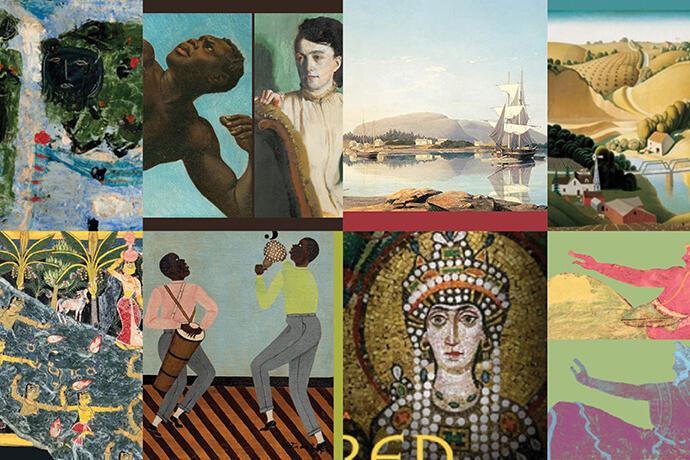 Meet our faculty Meet our graduate students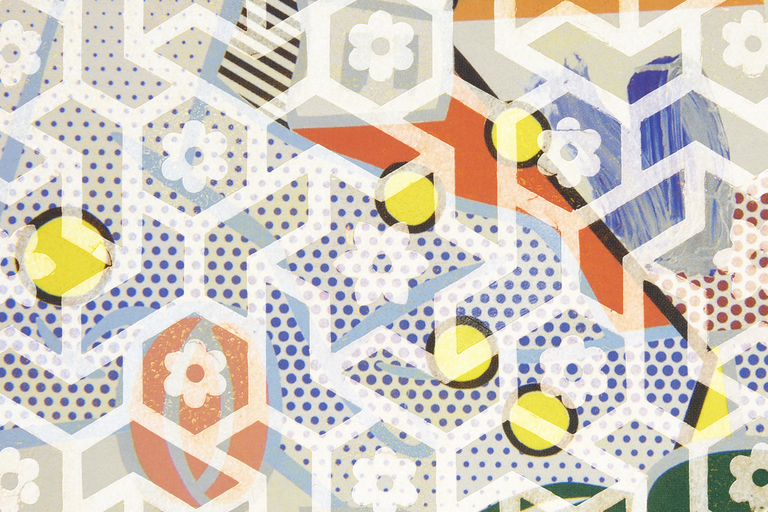 Featured NewsAnnouncing a new undergraduate art history journal, congratulations, shannon jackson hosts six new artist interviews with tippet rise art center, lisa pieraccini, advisory council member for mapra announces a major grant from the neh to the foundation for ethical stewardship of cultural heritage, henrike lange has received the american association of publishers prose award for excellence in humanities, big give is happening, lecture position open for history of art, henrike lange has received the american association of publishers prose award in art history and criticism, give to the department of history of art, annual newsletter, newsletter 2023. The annual newsletter is now here! Thanks to everyone who contributed texts and photographs, thanks to staff for assistance, thanks to Darcy Grimaldo Grigsby, and Justin Underhill, editors, and thanks especially to Julie Wolf for her great work as designer. And thank you BA alumni ... Read more about Newsletter 2023 Newsletter 2021 - 2022We are excited to share with you the 2021-2022 issue of our departmental newsletter. A huge thanks goes to Julia Bryan-Wilson, Justin Underhill, Heather Reilly, and Julie Wolf. Read more about Newsletter 2021 - 2022 The 2020-2021 History of Art Newsletter is Here! 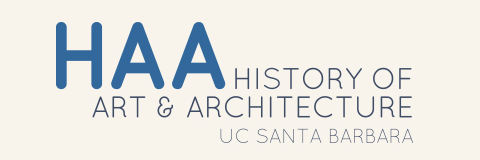 History of Art and Architecture - UC Santa BarbaraGraduate studies. 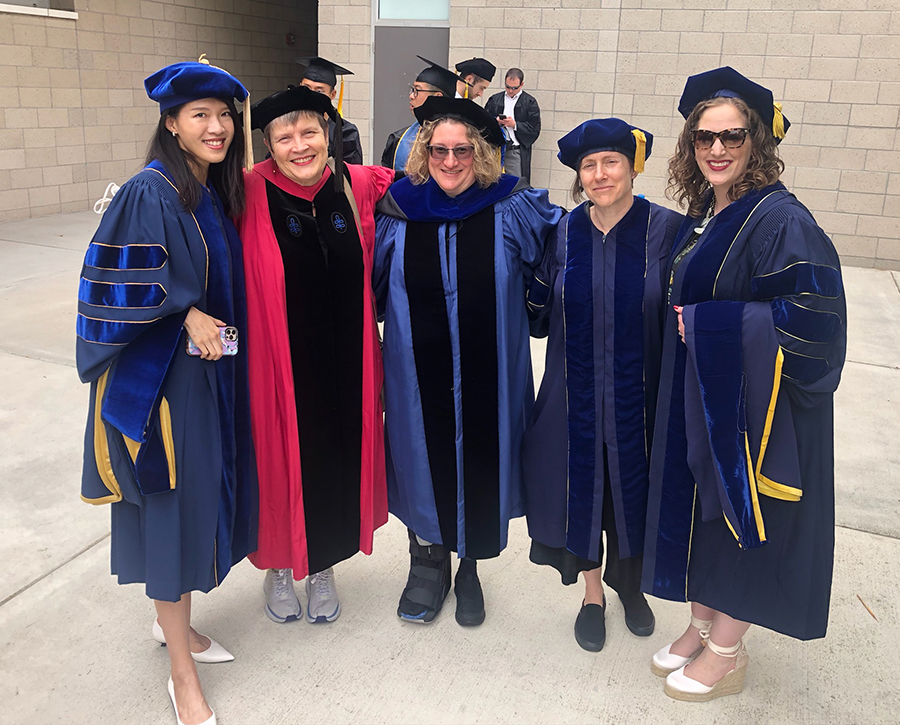 Our graduate alumni have proven extremely successful in recent years in finding both faculty and curatorial positions at top institutions. Recent alumni currently hold faculty positions at the University of Texas at Austin; University of Wisconsin–Madison; University of California, Merced; University of North Carolina at Chapel Hill; University of Illinois at Urbana–Champaign; Pennsylvania State University; University of Alabama at Birmingham; and Universidade do Estado do Rio de Janeiro, among many others. Many recent alumni also hold curatorial positions, including positions at the Los Angeles County Museum of Art, the Getty Museum, the Saint Louis Art Museum, the Williams College Museum of Art, The Huntington, Peabody Essex Museum, the Georgia O'Keeffe Museum, Wichita Art Museum, the RISD Museum of Art, and the Cantor Arts Center at Stanford University.  Department of the History of ArtUniversity of california, riverside, about the department of the history of art. 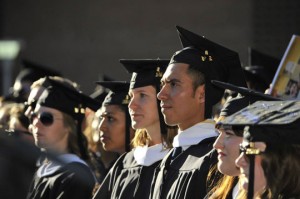 With its recently established PhD program, a well-respected MA program and a rich and varied array of undergraduate courses, the department provides a congenial and stimulating context in which to explore the history of art in different cultures and periods. Through close collaboration with departments such as History, Comparative Literature, Ethnic Studies, English, Anthropology, Music and, of course, Art, our teaching and research are embedded in the wider fields of the arts and humanities and we see art history as an essentially interdisciplinary activity. All members of our distinguished faculty are internationally recognized and actively publishing – see our individual faculty profiles– and our teaching and supervision of students at all levels is informed by these research interests. Covering medieval to the contemporary periods, our research and teaching deals with images and artifacts from Europe, Asia and the Americas. Why study art history? Throughout history, art and architecture have been among the most powerful means of social interaction and communication. Today, the visual dominates our world more than ever before. The discipline of Art History attempts to analyze how images and materials have been used in the past and are used in the present through a thorough understanding of their visual, contextual, and ideological bases. The History of Art is a unique discipline in that it allows students to approach and to access a great variety of subjects through the study of material culture. At both the undergraduate and graduate levels, students examine works of art in relation to the historical, political, cultural, social, philosophical and theological circumstances surrounding their creation. Undergraduate studies in Art History are designed to contribute to the general education of all students, stressing an understanding of the visual arts within their cultural and historical contexts. A major in Art History is essential preparation for graduate work in the discipline, and it also provides an excellent background for those planning to attend graduate and professional schools in other areas, or for those entering a more general job market. At the graduate level the department offers an MA degree to prepare students for further academic study at the doctoral level, and for careers in art critical writing and in museums, galleries, and other arts institutions. The MA may be completed in two years of full-time study, with the first year focused on coursework and the second on the research and writing of the thesis. This well-established MA program has recently been complemented by a separate PhD program. With its strengths in both the early modern and modern / contemporary fields, the department can offer specialist supervision in several specific areas, including the histories of architecture, sculpture and photography. Students working on photography can take advantage of internships and courses held at UCR’s California Museum of Photography. Research at all levels is supported by the department’s Visual Resources Center. The Department of Art History is a lively and stimulating place and we look forward to hearing from you. What are you looking for?Suggested search, department of art history, why study art history at usc. The Department of Art History at USC offers undergraduate and graduate degree programs that are designed to prepare students for teaching, research, and curatorial careers. It draws its strength from a dynamic and productive faculty in the fields of North American, Continental European, British, Mediterranean, Latin American, and Asian Art. Studying objects in their complex physical, cultural and intellectual contexts, our program is committed to a historically situated, materially engaged, and theoretically nuanced approach to art history and visual culture. Undergraduate StudiesArt history combines the study of art with the study of culture. The undergraduate major provides general knowledge of the history of art and, through upper-division courses, specialized knowledge in a variety of areas. Graduate StudiesUSC’s department of Art History offers its doctoral degree in a wide range of fields of Western and Asian art history, from ancient to contemporary. It is designed to prepare students for university teaching, research, and curatorial careers. Prospective Ph.D. StudentsUSC is a diverse community of scholars in the heart of Los Angeles — a dynamic center for technology, health services, media and the arts. Department CalendarNews and events, students with usc museums demystifies art, expansive presentation of roy lichtenstein, sculpting with light: contemporary artists and holography, featured faculty. 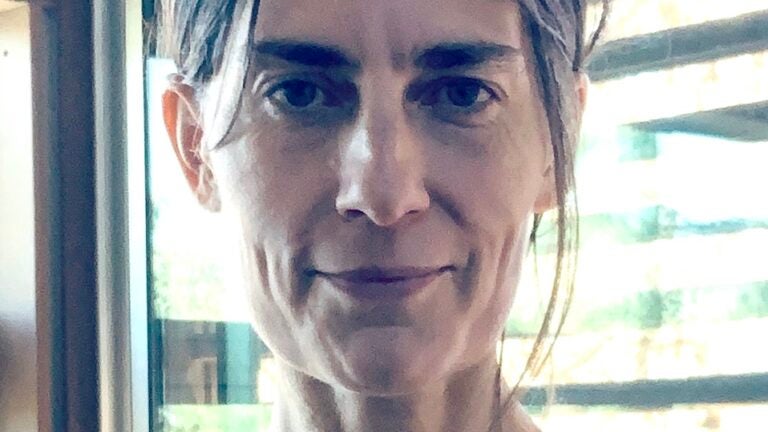 Congratulations to Amy Powell!!She has been named a fellow of the Institute for Advanced Study at Princeton for 2024-25.  Congratulations to Professor Sonya Lee! This year’s Raubenheimer awardee!Sonya Lee has been named one of this year’s Raubenheimer awardees, given by Dornsife for excellence in scholarship, teaching, and service.  Please join us in offering Sonya Lee a warm congratulations on receiving the Independent Publisher Book Award!Sonya Lee’s masterful book, Temples in the Cliffside: Buddhist Art in Sichuan , is the winner of the highly competitive Independent Publisher Book Award in the nonfiction/religion category (no.71).  The Department of Art History welcomes Assistant Professor, Luke FidlerProfessor Luke Fidler will join the department of Art History starting Fall 2023. A specialist of twelfth-century North German and Southern Scandinavian sculpture, Fidler is interested in questions of the sculptural, landscape, political and social order, and especially questions around embodied coercion. In addition to his scholarship on Medieval art, he is a curator of contemporary art, an active art critic, and an activist for prison education.  Hector Reyes on how math and art are closely linked in USC Dornsife video feature “The Mathematics of Art”In this USC Dornsife video feature, mathematics and art may seem diametrically opposed, but there is creativity and beauty in both. USC Dornsife’s Felicia Tabing is a mathematician who approaches her field of study through a creative lens. USC Dornsife’s Enrique Martinez Celaya is a professor, artist and former physicist who uses his mathematical background to inspire his work. Together with Dornsife art historian Hector Reyes, the three examine how math and art are more closely linked than it appears. 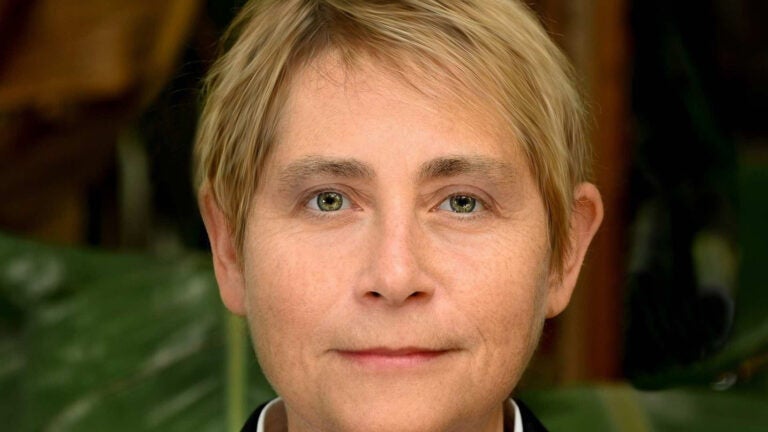 Congratulations to Professor Vanessa Schwartz on project awarded FNRS for 2023-2026 “Globetrotting: Touring Round the World (1869-1914)”Professor Vanessa Schwartz is a co-PI on an international, interdisciplinary, multi-year project directed by Jean-François Staszak, (Geography, University of Geneva) – and the project, “Globetrotting: Touring Round the World (1869-1914),” was selected for funding of close to one million Swiss Francs by Fonds National de la Recherche Scientifique (Suisse) (FNRS) for 2023-2026.  Art History Professors, Lisa Pon and Hector Reyes, visited the studio of muralist Fabian DeboraInstitute for Advanced Catholic Studies (IACS) staff and faculty, including art history Professors, Lisa Pon and Hector Reyes, visited the studio of muralist Fabian Debora to learn about his art and the transformative work happening at Homeboy Industires Art Academy in communities, colleges and correctional facilities across SoCal. Undergraduate Student SpotlightJina umakanthan. A USC Dornsife Art History Major has been offered the 2024 Joseph F. McCrindle Curatorial Internship in European Paintings at the Fine Arts Museums of San Francisco and a USC Provost’s Summer Research Fellowship in order to support her senior honors thesis. From Assistant Professor Luke Fidler, Art History: “Jina Umakanthan, who is writing an honors thesis with me, has just been awarded the Joseph McCrindle Curatorial Internship in European Paintings at the Fine Arts Museums of San Francisco. I’m extremely proud of Jina, who is an outstanding art historian in the making.” 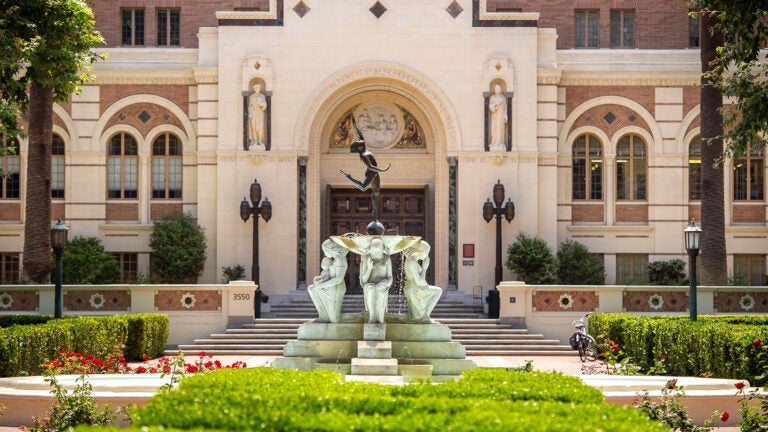 Ph.D Student SpotlightMargot yale. Congratulations to Margot Yale! Margot Yale has received the Wyeth Foundation Predoctoral Fellowship at the Smithsonian American Art Museum for the 2024–25 academic year and the Jane and Morgan Whitney Fellowship in the Department of Modern and Contemporary Art at The Metropolitan Museum of Art for the 2024–25 academic year. Olivia ArmandroffCongratulations to Olivia Armandroff! She has received a George Gurney and Predoctoral Fellowship at the Smithsonian American Art Museum for 2024-25 and a Crystal Bridges Tyson’s Scholar Fellowship for 2024-25, as well as a residential grant at the Yale Center for British Art. Elissa WattersElissa Watters has been selected as a recipient of the General Education Graduate Assistant Award! Eve SperlingEve Sperling has been awarded a 2024 Kress Fellowship for German immersion at Middlebury Language School for this summer. Weronika Malek-LubawksiWeronika Malek-Lubawksi has won an NCHA Graduate Student Fellowship to attend the International Congress of History of Art (CIHA) in Lyon in 2024, and the Stephen F. Cohen-Robert C. Tucker Dissertation Completion Fellowship from the Association for Slavic, East European and Eurasian Studies Association, 2024-25 Ashton CooperCongratulations to Ashton Cooper for successfully defending her dissertation: “How Hard to Give Form to Oneself Honestly”: Liberation Politics and the Remaking of Painterly Expression in 1970s New York Anne LaGattaCongratulations to Anne LaGatta for successfully defending her dissertation: “The Most Beautiful and Enduring Images”: Visual Culture in the Principate of Tiberius (14-37 CE). Audrey StormHas been awarded a Morgan-Menil Predoctoral Fellowship at the Morgan Library & Museum and the Menil Collection, and a Huntington Museum and Library Short-term Research Fellowship for 2024-25  Art History Ph.D AlumniNatalia lauricella, ph.d. Natalia Lauricella has been appointed Assistant Curator of Prints, Drawings, and Photographs at the Achenbach Foundation for Graphic Arts at the Fine Arts Museums in San Francisco. Yoonah Hwang, Ph.DCongratulations! Yoonah has accepted a tenure-track job as Assistant Professor of Art History at Pepperdine University beginning in fall 2024. Isabel Wade, Ph.DCongratulations on her position as an USC Dornsife Teaching Fellow, Los Angeles, CA. https://dornsife.usc.edu/profile/isabel-wade/ 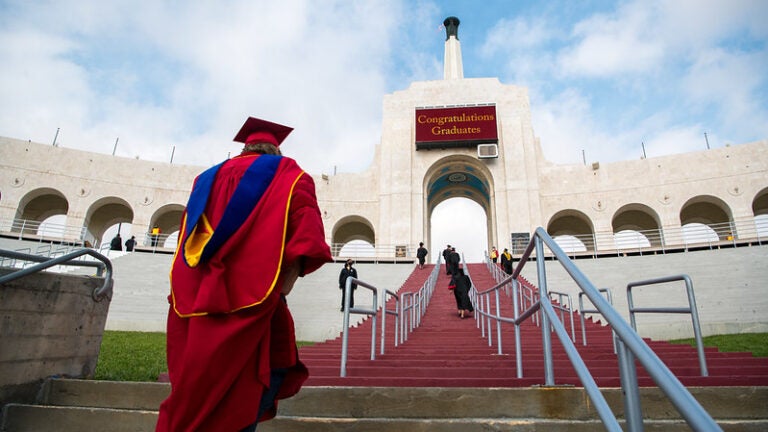 Local Area ResourcesUSC’s program takes great advantage of our location within the vibrant cultural environment of Los Angeles. undergraduate fieldtrips and Graduate seminars are regularly held on site or work with collections in area museums including the including the Los Angeles County Museum of Art (LACMA), the Museum of Contemporary Art (MOCA), the Getty Center, the Getty Villa and the USC Fisher Museum of Art among others. Los Angeles MuseumsUsc museums, archives and special collections, art history main office. USC Dornsife Department of Art History 3501 Trousdale Parkway, THH 355 Los Angeles, CA 90089-0351 Chair of Art HistoryAmy Knight Powell Associate Professor of Art History Interim Chair, Dept. of Art History, Spring 2024 [email protected] Elizabeth Massari Office Manager [email protected] Tracey L. Marshall Administrative Assistant II [email protected] FellowshipBard Fully Funded PhD in Art History at University of California Los AngelesJoin our telegram channel, never miss an opportunity. The University of California, Los Angeles (UCLA) provides an exceptional opportunity for individuals seeking a fully funded Ph.D. in Art History. The program is designed to facilitate comprehensive academic exploration and research in the field, culminating in the award of a Master’s degree as part of the initial phase of the doctoral program. PhD Program Requirements Prospective candidates are required to demonstrate a strong academic background, including a bachelor’s degree in a relevant field. Additionally, a keen interest in art history and a well-defined major field of study within the discipline are crucial for successful admission. PhD Funding Coverage UCLA is committed to providing robust financial support to selected incoming Ph.D. students in Art History. The funding packages, spanning four to five years, consist of a combination of fellowships and Teaching Assistantships. The financial support package includes an annual stipend of $28,000, in addition to coverage of registration fees and tuition. Application Requirement The application package for the UCLA Ph.D. in Art History program should include the following components: - Completed application form.
- Transcripts from all previous academic institutions attended.
- Letters of recommendation highlighting the applicant’s academic and research potential.
- A comprehensive statement of purpose outlining the candidate’s research interests and objectives.
- A sample of academic writing or a research paper.
- Curriculum vitae (CV) detailing the applicant’s academic and professional experiences.
Application Deadline November 30, 2024 Application Fee The $135.00 (for U.S. citizens and Permanent Residents) or $155.00 (for all other applicants). This might interest you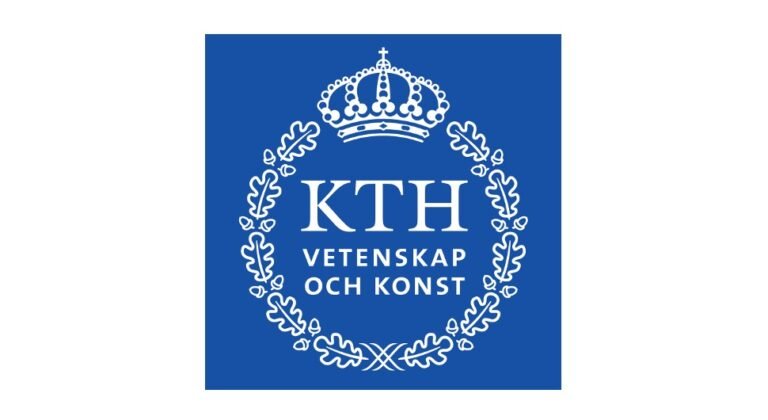 Recently ViewedSimilar programs.  Professors Not Responding? Your CV May Be the Reason.Try Our Ready-to-Use CV Templates Land You in Harvard, MIT, Oxford, and Beyond! Fully Funded PhD Programs in Art History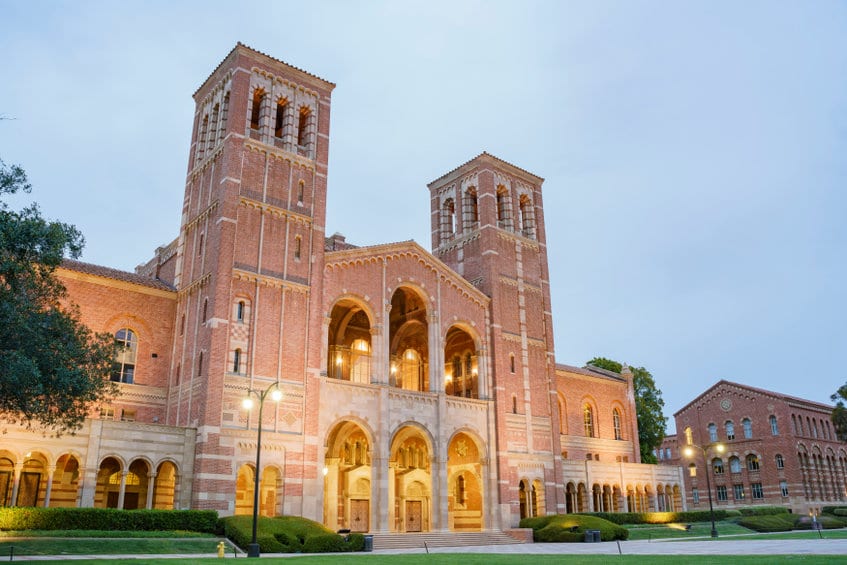 As part of my series on How to Fully Fund Your PhD , I provide a list of universities that offer fully funded PhD programs in Art History. Through a PhD in Art History, you could work as an Art Director, Writers and Author, Postsecondary Art Teacher, curator, and many more. Fully funded PhD programs provide a funding package for full-time students that includes full tuition remission and an annual stipend or salary for the three to the six-year duration of the student’s doctoral studies. Funding is typically offered in exchange for graduate teaching and research work that is complementary to your studies. Not all universities provide full funding to their doctoral students, which is why I recommend researching the financial aid offerings of all the potential Ph.D. programs in your academic field, including small and lesser-known schools both in the U.S. and abroad. You can also find several external fellowships in the ProFellow Database for graduate and doctoral study, as well as dissertation research, fieldwork, language study, and summer work experience. Would you like to receive the full list of more than 1000+ fully funded programs in 60 disciplines? Get your copy of our FREE Directory of Fully Funded Graduate Programs and Full Funding Awards ! PhD Programs in Art History Offering Full FundingUniversity of california, los angeles. (Los Angeles, CA): The UCLA Department of Art History offers four and five-year funding packages to selected incoming students that consist of a combination of fellowships and Teaching Assistantships (currently $28,000 per year plus registration fees/tuition). The University of Chicago(Chicago, IL): The annual stipend for art history Ph.D. students is $32,000 over 12 months. Students also receive full tuition and health insurance premium coverage. Funding is granted to students in good academic standing for the duration of the program. Art history Ph.D. students typically serve as teaching assistants. Research and conference travel grants are available at various stages. Columbia University(New York, NY): All admitted students receive full funding, including tuition and stipend. Standard fellowships are for five years and involve teaching or other types of department service during at least three of the five years. Students are very often successful in obtaining further support from competitive fellowships offered by Columbia and other competitions. Florida State University(Tallahassee, FL): Doctoral applicants are automatically considered for teaching assistantships with full tuition waivers for a minimum of three years. Applicants may also be nominated by the department for prestigious University fellowships offered each year to a select number of incoming graduate students with outstanding scholastic records. The Graduate Center, CUNY(New York, NY): Nine students are admitted per year to the Ph.D. Program in Art History. Of these, seven will be awarded Graduate Center Fellowships (GCFs) and two will be awarded tuition-only Fellowships. The GCFs are a five-year package of $26,128 per year (including healthcare).  University of Minnesota(Minneapolis, MN): All accepted students are guaranteed five years of funding through a combination of teaching assistantships, research assistantships, and fellowships. Assistantships provide an annual stipend, a full-tuition scholarship, and health insurance. Students who win external fellowships are allowed to save a year of their UMN funding for a sixth year. Northwestern University(Evanston, IL): The Graduate Program in Art History offers a full-time Ph.D. and the Department provides its Ph.D. students with full financial aid for five years as well as travel grants for conference presentations and archival research. The University of Texas at Austin(Austin, Texas): The faculty’s goal is to support all admitted Ph.D. students with a combination of Teaching Assistantships, Assistant Instructor positions, Graduate Research Assistant positions, and scholarship funds so they can earn their degree with as little outside cost as possible. Tulane University(New Orleans, LA): Students in the Ph.D. program are fully funded. The student may wish to seek additional funding from other sources to support graduate study, research travel, and hosting visiting lecturers. Washington University in St.Louis(Saint Louis, MO): Students accepted into the Ph.D. program who remain in good standing are guaranteed six years of full funding in the form of University Fellowships, with an annual stipend of $28,152 (2021-22) and full tuition remission. Advanced Ph.D. students may also offer summer courses through University College to gain valuable independent teaching experience. Need some tips for the application process? See my article How To Get Into a Fully Funded PhD Program: Contacting Potential PhD Advisors . Also, sign up to discover and bookmark more than 1900 professional and academic fellowships in the ProFellow database . © ProFellow, LLC 2021, all rights reserved. Related Posts:- Fully Funded PhD Programs in History
- Fully Funded PhD Programs in School Psychology
- Fully Funded Master's Programs in History
- Fully Funded PhDs in Teaching English as a Second Language
- Fully Funded PhD Programs in Mathematics
Fully Funded PhD Programs , PhD in Art History Slaying Your Biggest Fears About Applying to Grad SchoolHelping nashville schools during the pandemic: the urban leaders fello..., find and win paid, competitive fellowships. Be alerted about new fellowship calls for applications, get insider application tips, and learn about fully funded PhD and graduate programs Fellowship Resources- Calls for Applications
- Upcoming Fellowship Deadlines
- Fellowships Database
- Interviews with Fellows
- International Fellows Network
- Graduate Funding Directory
Fellowship Tips- What is a Fellowship?
- Fully Funded Course
- Graduate School Funding
- Fellowship Application Tips
- Fulbright Application Tips
- Fellowship Application Guide
- Our Mission, History & Values
- ProFellow Winner Testimonials
- Fully Funded Course Testimonials
- Fellowship Industry Report
- Advertise With Us
- Terms & Privacy
ProFellow is the go-to source for information on professional and academic fellowships, created by fellows for aspiring fellows. ©2011-2024 ProFellow, LLC. All rights reserved. Our website requires JavaScript. Please enable JavaScript in your browser. Not sure how?Home » Academics Academy of Art University offers over 129 art degree programs including Certificates, Associate degrees, Bachelor’s degrees, and Master’s degrees. Designed to equip aspiring artists and designers with a comprehensive toolbox of knowledge and marketable skills that you will use in your future career. In addition, we offer non-degree art programs, like the FREE Pre-College Art & Design Experience (PCADE) for high school students, and continuing education courses for adults. Our programs are available on our campus in San Francisco and online at the Academy of Art University . Undergraduate - Associate of Arts (AA)
- Bachelor of Arts (BA)
- Bachelor of Fine Arts (BFA)
- Bachelor of Science (BS)
- Bachelor of Architecture (B.Arch)
- Master of Arts in Teaching (MAT)
- Master of Arts (MA)
- Master of Fine Arts (MFA)
- Master of Architecture (M.Arch)
Acting AA BFA MA MFA Advertising AA BFA Certificate MA MFA Animation & Visual Effects AA BFA Certificate MA MFA Architecture B.Arch BA M. Arch M. Arch2 MA MA2 Art Education BFA CRED CRED2 MA MA2 MAT MAT2 Art History BA BFA MA Communications & Media Technologies BA MA Fashion AA BFA Certificate MA MFA Fine Art AA BFA Certificate MA MFA Game Development AA BFA BS MA MFA Graphic Design AA BFA Certificate MA MFA Illustration AA BFA Certificate MA MFA Industrial Design AA BFA Certificate MA MFA Interaction & UI/UX Design AA BFA Certificate MA MFA Interior Architecture & Design AA BFA Certificate MA MFA Jewelry & Metal Arts AA BFA MA MFA Landscape Architecture AA BFA MA MFA Motion Pictures & Television AA BFA Certificate MA MFA Music Production & Sound Design for Visual Media AA BFA MA MFA Photography AA BFA Certificate MA MFA Visual Development AA BFA MA MFA Writing for Film, Television & Digital Media BFA MFA No results match your selection.Not sure which program is right for you. Contact us and find out more about art degree paths at the Academy of Art University . Liberal Arts ProgramThe Liberal Arts Program provides students with a holistic education covering the arts, humanities, and sciences. Courses highlight connections between the subject of study and the major fields of art and design, providing context to the larger world of art and design. FoundationsThe Foundations curriculum heightens perception and understanding of visual structure through the study of drawing, modeling of form, value structure, perspective principles, color, and design theory. Short-Term EducationWe offer options for non-degree studies. Brush up on your art and design skills, study overseas, learn social media, or get a head start on college. Enrollment is now open!The next semester is just around the corner. Online EducationOur revolutionary online courses provide the same rigorous education that we offer on campus with greater flexibility. Study on your own time, at your own pace. Combine online and on-site classes. Financial AidCompleting the FAFSA (Free Application for Federal Student Aid) is the first step in a student being considered for federal and state education aid programs. Everything that I learned at the Academy really helped put me above the competition in the field that I’m in. It is the school that is going to push you to be the best artist that you can be. Every time I shoot, there’s something that I’m using. It’s a community. Being an alumna of Academy of Art University, you always have that community with you. The reason I chose the Academy was games and architecture. It’s very rare to find a school that does both.  Pride celebration highlights LGBTQ+ history, advocacy, and art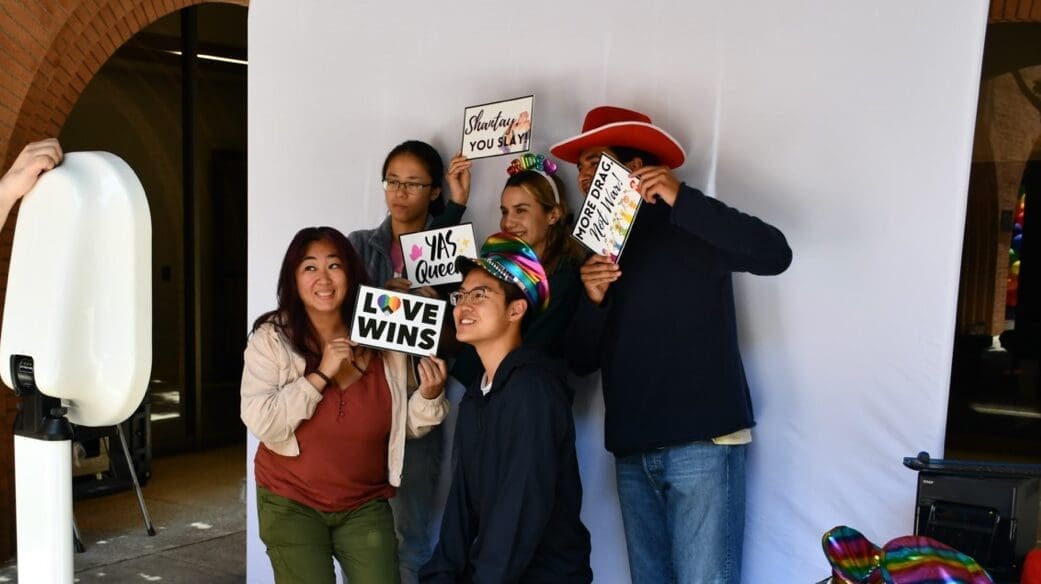 Home » Pride celebration highlights LGBTQ+ history, advocacy, and art Event featured presentations from USC ONE Archives and the Los Angeles LGBT Center, paintings and ceramic art displays, and music by Mariachi Arco-Iris de Los Angeles. Faculty, staff and students of the USC Leonard Davis School of Gerontology enjoyed presentations on LGBTQ+ history and activism as well as art displays, music and lunch during the school’s third annual Pride celebration and lunch on June 12, 2024. Pinchas Cohen, dean of the USC Leonard Davis School, welcomed attendees and emphasized the school’s commitment to supporting LGBTQ+ community members. “We celebrate our LGBTQ colleagues and stand beside them in every way,” he said. Expert speakersDerrick Morton , assistant professor of biological sciences and gerontology, spoke about the origins of Pride following the Stonewall Riots of 1969 and other milestones for LGBTQ+ advocacy, including the removal of homosexuality from the Diagnostic and Statistical Manual of Mental Disorders in 1973 and the nationwide legalization of same-sex marriage in 2015. He noted that while these successes are important, there is still more to be done to support members of gender and sexual minority communities. “Tolerance is just the bare minimum, and acceptance is the standard,” Morton said. “Celebration should be the norm.” Loni Shibuyama, librarian with the ONE Archives at the USC Libraries, spoke about the archives’ origin in 1952 with ONE Inc., the creator of ONE Magazine, the first nationally distributed magazine for gay and lesbian people. Today, ONE Archives is the largest repository of LGBTQ+ materials is the world, housing millions of items including periodicals, books, films, videos, audio recordings, photographs, artworks, organizational records, and personal papers. These records show was life was like for famous activists and ordinary LGBTQ+ people alike, Shibuyama said. The archives also include records detailing the history of organizations advocating for older LGBTQ+ adults, including Senior Action in a Gay Environment and the Society for Senior Gay and Lesbian Citizens , she added. Kiera Pollock, director of senior services at the Los Angeles LGBT Center , discussed the center’s role as the first LGBT nonprofit in the U.S. and its ownership and operation of Triangle Square Apartments, the nation’s first affordable housing development created with LGBTQ+ older adults in mind. A welcoming, affirming community is especially important for older members of gender and sexual minority groups, she explained, as they may not find the support they need in traditional senior communities and may even feel pressure to go back into the closet. “Many older LGBTQ+ adults have no chosen family of support,” Pollock said. “LGBT-friendly long-term care is one of their biggest concerns.” Music and artistic expressionFollowing the presentations, students, staff and faculty enjoyed lunch, a photobooth, art, and music in the Andrus Center courtyard. The Sophie Davis Gallery hosted an intergenerational art exhibition featuring local artists from the LGBTQ community. Works on display included paintings by John LaRoche and Miguel Angel Reyes as well as ceramic art and live pottery demonstration by Nicole Reyes (no relation) of Cobalt & Clay . Mariachi Arco-Iris de Los Angeles performed live music for attendees. The group is the world’s first LGBTQ+ mariachi ( arcoiris is Spanish for rainbow) and was created as a haven for mariachi musicians who identify as LGBTQ+ to come together and perform traditional Mexican regional music, per the band’s website.  Related Posts Privacy Notice Notice of Non-Discrimination Digital Accessibility - How to Give
- What is Gerontology?
- Our Expertise
- Faculty & Staff Portal
- Honors and Awards
- Publications
- Resources for Journalists
- Undergraduate Programs
- Master’s Programs
- Certificate Programs
- PhD Programs
- Professional Education
- Twitter / X
© 2024 USC Leonard Davis School of Gerontology. - About Us Our mission to promote healthy aging for diverse people, communities and societies is more vital than ever.
- Partnerships
- Diversity, Equity and Inclusion
- Board of Councilors
- Gerontology Careers
- Our Gerontology Expertise
- Andrus Gerontology Center
- Sophie Davis Art Gallery
- Administrative Staff
- Gerontology Directory
- Employee Resources
- Jobs at USC Leonard Davis
- Admission Our students come from around the world and from many walks of life, and they’re all here for unique, important reasons.
- Undergraduate Applicants
- Master’s Applicants
- PhD Applicants
- Graduate Certificate Applicants
- Doctorate of Longevity Arts and Sciences Applicants
- International Applicants
- Online Education
- Request Information
- How to Apply
- Newly Admitted
- Tuition and Financial Aid
- Frequently Asked Questions
- Office Hours
- Academics At the USC Leonard Davis School, you can earn an undergraduate gerontology degree, an accelerated five-year undergraduate or graduate degree program, a doctoral degree, or a minor in aging.
- Human Development and Aging (BS)
- Lifespan Health (BS)
- Minor in Gerontology: Individuals, Societies, and Aging
- Minor in Gerontology: Science, Health, and Aging
- Minor in Geroscience
- Aging Services Management (MA)
- Applied Technology and Aging (MS)
- Gerontology (MS)
- Gerontology (MA)
- Long Term Care Administration (MA)
- Medical Gerontology (MA)
- Senior Living Hospitality (MA)
- Specialized Master’s Programs
- Foodservice Management and Dietetics (MA)
- Nutrition, Healthspan and Longevity (MS)
- Lifespan, Nutrition and Dietetics (MS)
- Nutritional Science (MS)
- Graduate Certificate in Gerontology
- Doctorate of Longevity Arts and Sciences
- PhD in Gerontology
- PhD in Geroscience
- Academic Advisement
- Career Development
- Advisement FAQs
- Students Students of the USC Leonard Davis School of Gerontology share a deep compassion, an inspiring enthusiasm and a vision of an improved quality of life for older adults.
- Undergraduate and Graduate Students
- PhD Students
- Internships
- MSNHL Supervised Practice
- Research Opportunities
- Academic Conduct
- Student Organizations
- Study Abroad
- Alumni Stories
- Finding Support
- Resources Overview
- Student Handbooks
- Course Catalogue
- Schedule of Classes
- Academic Calendar
- USC Student Affairs
- USC Student Health Center
- School Faculty
- Alphabetical Directory
- Institutes and Centers
- Projects and Initiatives
- Multidisciplinary Colloquium Series
- Research Funding Awards
- Research Events
- COVID-19 News
- Stay Connected
- Event Calendar
- USC FightOnline
- Support the USC Leonard Davis School
- Giving Priorities
- Join the Dean’s Circle
- Contact the Development Office
- Podcast: Lessons in Lifespan Health
- Vitality Magazine
 - Interesting for you
- My settings
Art HistoryThe Department of the History of Art at the University of California, Riverside, offers Art History Ph.D. degrees with an emphasis on the history of art and architecture from the early modern period to the present. University of California, Riverside Multiple locations Riverside , California , United States Top 2% worldwide Studyportals University Meta Ranking 5.0 Read 2 reviews Featured by University of California, Riverside The Art History program at the University of California, Riverside offers interdisciplinary training across the history of art and architecture from the Middle Ages to the present, with a strong focus on the history of photography, sculpture and architecture. It concentrates on areas of cross-cultural exchange, cross-disciplinary discourse, and significant internal developments in the early modern and Renaissance period to the present in Asia, Europe and the Americas. What you will learnThe curriculum is divided into three broad areas of study: pre-modern, early-modern, and modern/contemporary. Students are expected to take courses in a range of historical periods and cultural traditions within and outside their area of specialization. The program supports interdisciplinary study within the department and in conjunction with other departments, including Comparative Literature, English, Dance, History, Anthropology, Media and Cultural Studies, and Religious Studies. Programme StructureCourses include: - The Body in Western Art: Antiquity to Present
- Berlin Metropolis in Literature, Film, Music, and Art
- Illustrations and Illuminations: the Arts of the Book in the Islamic World
- Postmedia Art
- History of Experimental Cinema
- The Gothic Cathedral in its Urban Context
- The Medieval Pilgrimage and the Art of Romanesque France
Key information- 48 months
- 4 years if entering with an MA, 5 otherwise
Start dates & application deadlines- Apply before 2025-01-05 00:00:00
- Students entering without an MA in art history or a closely related field must earn 26 units (quarter credits); 24 units for those entering with an MA.
DisciplinesAcademic requirements, english requirements, student insurance. Make sure to cover your health, travel, and stay while studying abroad. Even global coverages can miss important items, so make sure your student insurance ticks all the following: - Additional medical costs (i.e. dental)
- Repatriation, if something happens to you or your family
- Home contents and baggage
We partnered with Aon to provide you with the best affordable student insurance, for a carefree experience away from home. Starting from €0.53/day, free cancellation any time. Remember, countries and universities may have specific insurance requirements. To learn more about how student insurance work at University of California, Riverside and/or in United States, please visit Student Insurance Portal . Other requirementsGeneral requirements. - Applicants may apply to the program after completing a BA or an MA in art history or a related discipline.
All applicants submit the following: - Statement of Purpose
- Personal History Statement
- At least three (3) Letters of Recommendation
- Unofficial Transcripts from all postsecondary schools attended
- Graduate Division Supplemental Fellowship Information Form
- Curriculum Vitae (CV)
- A Writing Sample not to exceed 20 pages (one sample of approximately 20 pages, or 2-3 shorter samples totaling approximately 20 pages, references and images excluded)
Tuition FeeInternational. fees per quarter Living costs for RiversideThe living costs include the total expenses per month, covering accommodation, public transportation, utilities (electricity, internet), books and groceries. In order for us to give you accurate scholarship information, we ask that you please confirm a few details and create an account with us. Scholarships InformationBelow you will find PhD's scholarship opportunities for Art History. Available ScholarshipsYou are eligible to apply for these scholarships but a selection process will still be applied by the provider. Read more about eligibility - missing or incomplete ?"> Missing or incomplete content
- wrong or outdated ?"> Wrong or outdated content
Other interesting programmes for youOur partners. Go to your profile page to get personalised recommendations! | | | | University of Delaware | | | | Jun 18, 2024 | | | 2024-2025 Graduate Catalog | | | 2024-2025 Graduate Catalog
| | | Program Educational Goals:Students will demonstrate: - Knowledge of artistic traditions across a wide diversity of times and places, and also a high level of knowledge in one particular area of study, whether chronological, geographical and/or thematic.
- The ability to write about works of art clearly and with appropriate attention to such factors as style, iconography, condition, provenance and reception. They will demonstrate the ability to present their writing with the appropriate citations of evidence from both primary and secondary, visual and textual, sources, and to use at least one language other than English as necessary for their scholarship.
- The ability to communicate their knowledge concerning works of art in oral form, both to other art professionals and to more general audiences.
Program Policy Document:Please see the Program Policy Document for more information. Requirements for the Degree:For students seeking a PhD in art history, the Department offers two routes to degree completion. One is designed for students who hold an MA in art history or its equivalent. The other, the Direct PhD Program, is an accelerated path designed for students who hold a Bachelor’s Degree in art history, or a related field, and are seeking a PhD in Art History. Students admitted to the Direct PhD Program have the option of stepping out of the program at the MA degree. Direct PhD Program Requirements (with BA degree in hand):Requirements for students in the Direct PhD program consist of a minimum of 36 credits of graduate course work, satisfactory completion of the language requirement (advanced proficiency in at least one language other than English), three credits of ARTH 870 - Master’s Paper , and major and minor PhD field exams. Candidates then produce a dissertation, which is defended in an oral examination. Upon the successful completion of 27 credits of coursework and 3 credits of ARTH 870 , a language exam, and the Master’s Paper, students will be awarded an M.A. degree. Core Coursework:A minimum of 36 credits of graduate course work is required, with at least 27 of these credits to be in Art History seminar courses and the other 9 to be selected from additional seminars, graduate lecture courses, or independent study courses, or a combination of these. Chronological Distribution:Students enrolled in the Direct Ph.D. Program must take at least one (1) graduate seminar or graduate-level lecture course (600 or 800 level) in each of the following four (4) time periods (if a course cuts across boundaries between time periods, it will count as one period only at the judgment of the faculty and in consultation with the Director of Graduate Studies). At the beginning of each semester, all Department of Art History courses will be identified as satisfying the requirement in one (or none) of these areas. Students who wish to satisfy the distribution requirement with courses taken outside the Department of Art History must petition the Director of Graduate Studies in writing before enrolling in such a course, and must receive approval for the satisfaction of the distribution requirement by that course from the Director of Graduate Studies. The list below is not exhaustive and is subject to change. Before the year 1400:- ARTH 605 - Studies in Greek and Roman Art Credit(s): 3
- ARTH 606 - Studies in Medieval Art Credit(s): 3
- ARTH 613 - Studies in Renaissance Art & Architecture Credit(s): 3
- ARTH 616 - Studies in Italian Baroque Art Credit(s): 3
- ARTH 617 - Studies in Northern Baroque Art Credit(s): 3
- ARTH 619 - Studies in Art of the Iberian World, 1400-1800 Credit(s): 3
- ARTH 620 - Seminar in African Art Credit(s): 3
- ARTH 621 - Studies in Nineteenth Century Art Credit(s): 3
- ARTH 627 - Studies in the History of Photography Credit(s): 3
- ARTH 629 - Seminar in Modern Architecture Credit(s): 3-12
- ARTH 635 - American Art to 1900 Credit(s): 3
1900-present:- AFRA 645 - Black Bodies on Display: Race in Museums Credit(s): 3
- ARTH 623 - Studies in Modern Art since 1900 Credit(s): 3
- ARTH 626 - Studies in Modern Art and Theory Credit(s): 3
- ARTH 636 - Modern American Art Credit(s): 3
- ARTH 656 - Studies in Contemporary Architecture Credit(s): 3
Geographic Distribution:Students enrolled in the Direct Ph.D. Program must take at least one (1) course in three of the following five (5) areas (if a course cuts across boundaries between geographic areas, it will count as one area only at the judgment of the faculty and in consultation with the Director of Graduate Studies). - ARTH 602 - Seminar: Curatorial Studies Credit(s): 3
- ARTH 633 - Seminar in Orientalism and Postcolonial Art History Credit(s): 3
Art of the Americas:- HIST 605 - Historiography of Material Culture Credit(s): 3
- UAPP 654 - Architecture of Everyday Life Credit(s): 3
East Asian:Art of islam, master’s paper requirement:. Three credits. - ARTH 870 - Master’s Paper Credit(s): 3
Language Requirement:The Department of Art History considers the ability to read scholarly works in languages other than English essential. All graduate students entering the M.A. or the Ph.D. Programs in the Department are expected to have upon enrollment or to gain at the earliest possible moment the ability to read works in the history of art in at least one language other than English, as approved by their faculty adviser and the Director of Graduate Studies and as appropriate to their course of study. Proficiency in the selected language will be tested by a Departmental language examination. During a period of one hour, with the use of a dictionary, the student must translate a passage of art historical writing. Ph.D. students must demonstrate an advanced proficiency in the language and be able to comprehend sophisticated art historical writing. Although only one language is required to obtain the degree, doctoral students wishing to apply or be nominated to certain outside fellowships may be required to demonstrate competence in two languages. Comprehensive Examinations:The Direct Ph.D. student is required to take the Ph.D. Comprehensive Examinations (including both major and minor field examinations) no later than the end of the second week of the second semester following the completion of Ph.D. coursework, but not before having completed Ph.D. course work and having satisfactorily completed the language requirement. Successful completion of both parts of the comprehensive examination is required for admission to Doctoral Candidacy. A student’s major and minor fields should be distinct from one another, separated by some combination of geography, time period, media, or other factors as appropriate. Definition of the major and minor fields, although proposed by the student, must have the approval of the primary faculty adviser and the Director of Graduate Studies. Both the major and minor field examinations are assessed as either passing or failing. An affirmative vote for a passing grade by a majority of the examiners is necessary for the examination to be considered passing. Should the student fail either the major field or the minor field examination, the student will be given an opportunity to take that portion only for a second time. The second attempt to pass the examination must be made not later than the end of the first semester after the first attempt to pass that portion. Failure to pass the examination on the second attempt will result in termination from the program effective at the end of that term. No third attempt will be permitted. Major Field:The major field exam comprises written and oral components, both administered by an examining committee. The written component of the exam is designed to test the student’s knowledge of the field (including works of art and significant themes and issues in the scholarship) and critical thinking. After consulting with the student the examining committee will define five to eight broad areas or themes that will guide preparation for the exam. Each area should encompass a broad segment of the field and command a substantial bibliography. A bibliography usually containing 25 to 40 items (a mix of books and articles) for each theme will be prepared by the student and approved by the committee. The exam itself will consist of six questions designed by the examiners to engage the prepared areas. The student will be expected to answer three of these questions in essays of no more than 3,000 words each within a period of three consecutive days. The oral component, a two-hour exam, will be held no more than one week after the written exam is completed. It may return to the questions posed in the written exam but is not restricted to them, and the student may be asked to relate particular works to themes addressed in the written exam. Minor Field:The minor field exam only comprises a written component administered by an examining committee. The minor exam is designed to test the student’s knowledge of the field (including works of art and significant themes and issues in the scholarship) and critical thinking. Three to five broad areas or themes will be defined by the examining committee after consulting with the student. A bibliography containing 10 to 15 items for each theme will be prepared by the student and approved by the committee. The exam itself will consist of two parts and extend over a period of three consecutive days. The first part will contain six questions designed by the examiners to engage the prepared areas. The student will be expected to answer three of these questions in essays of no more than 2,000 words each. In the second part of the exam, the student will answer three of six questions, in essays of no more than 1,000 words each, based on specific works or groups of works which may be visual or textual. Dissertation:Nine credits. - ARTH 969 - Doctoral Dissertation Credit(s): 1-12
Credits to Total a Minimum of 48Phd program requirements (with ma degree in hand):. Requirements for the PhD for students holding an MA include a minimum of 24 credits of graduate course work beyond the MA and satisfactory completion of the language requirement (advanced proficiency in at least one language other than English) and major and minor PhD field exams. In addition to the 24 credits of graduate course work, nine Dissertation Credits are required. Candidates then produce a dissertation, which is defended in an oral examination. A minimum of 24 credits of graduate course work beyond the M.A. is required, with at least 18 of these credits to be in Art History seminar courses and the other 6 to be selected from additional seminars, graduate lecture courses, or independent study courses, or a combination of these. Students who enter the Ph.D. Program with an M.A. in Art History from another institution must take at least one (1) graduate seminar or graduate-level lecture course (600 or 800 level) in three (3) of the following four (4) time periods (if a course cuts across boundaries between time periods, it will count as one period only at the judgment of the faculty and in consultation with the Director of Graduate Studies). At the beginning of each semester, all Department of Art History courses will be identified as satisfying the requirement in one (or none) of these areas. Students who wish to satisfy the distribution requirement with courses taken outside the Department of Art History must petition the Director of Graduate Studies in writing before enrolling in such a course, and must receive approval for the satisfaction of the distribution requirement by that course from the Director of Graduate Studies. Students holding M.A. degrees from other programs, who have taken graduate seminars offered by the Department of Art History as part of their M.A. credits, may submit a written request to the Director of Graduate Studies to allow such courses to satisfy their doctoral breadth requirements; if the request is approved, the student will still need to complete the 24 credits of graduate course work beyond the M.A. required by the Ph.D. program. Students who enter the Ph.D. Program with an M.A. in Art History from another institution must take at least one (1) course in three (3) of the following five (5) areas (if a course cuts across boundaries between geographic areas, it will count as one area only at the judgment of the faculty and in consultation with the Director of Graduate Studies). The list below is not exhaustive and is subject to change. Art of Islam:The Ph.D. student is required to take the Ph.D. Comprehensive Examination (including both major and minor fieldexaminations) no later than the end of the second week of the second semester following the completion of Ph.D. coursework, but not before having completed Ph.D. course work and having satisfactorily completed the foreign languagerequirement. Successful completion of both parts of the comprehensive examination is required for admission to Doctoral Candidacy. The minor field examining committee will contain two members of the department faculty determined by the primary faculty adviser and the Director of Graduate Studies after consultation with the student. Students should have taken seminars in the area of the minor field as part of the preparation for the exam. Unlike major fields, minor fields may be defined in a variety of ways that may be distinct from the major fields. The scope of the minor field may be proposed by the student but must be approved by the primary faculty adviser and the Director of Graduate Studies. Credits to Total a Minimum of 33Last revised for 2023-2024 academic year.  - Call for Papers for the 59th Annual UCLA Art History Graduate Symposium entitled In Crisis
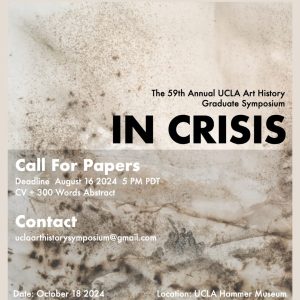 We are pleased to share the Call for Papers for the 59 th Annual UCLA Art History Graduate Symposium entitled In Crisis . This year’s symposium will take place in person on Friday, October 18, 2024 ; submissions are due Friday, August 16, 2024 and accepted presenters will be notified by September 1. Please find the full call with submission guidelines here More details will be shared in the coming months; should you have any questions in the meantime, please email [email protected] . Recent Posts- Congratulations to the Class of 2024!
- “Treasures of Peru” trip lead by Prof. Stella Nair in Summer 2025
- Professor Thiago Puglieri appointed Getty Scholar for 2024-2025 academic year
- Professor Lothar von Falkenhausen to be featured speaker at UCLA Fowler Museum
 - All Opportunities
- Staff Opportunities
- Faculty Opportunities
- Librarian Opportunities
- CUPE 3902 (Unit 3) Opportunities
- CUPE 3902 (Unit 3) Emergency Posting Opportunities
- UTemp (Short-Term)
- Affiliated Hospital Opportunities
- Student Opportunities
- Federated Colleges Opportunities
- Frequently Asked Questions
- Working at U of T
- HR & Equity
- Workplace Inclusion
- Join Our Talent Network
- USW Staff Appointed Opportunities
People Strategy, Equity & Culture Sessional Lecturer - FAH101H5F Introduction to Art HistoryDate Posted: 06/17/2024 Req ID: 38051 Faculty/Division: UofT Mississauga Department: UTM: Visual Studies Campus: University of Toronto Mississauga (UTM) Description: Course number and title: FAH101H5F Introduction to Art History An overview of the art and architecture of the past and present, as well as an introduction to the discipline of art history and its methodologies. Emphasis on representative monuments and key approaches to interpretation. Estimated course enrolment: 400 Estimated TA support: 8 Class schedule: Wednesday 15:00-17:00; tutorial 17:00-19:00 Sessional dates of appointment: September 3rd - December 23rd, 2024 $9,457.90 (Sessional Lecturer I) $9,930.79 (Sessional Lecturer I Long Term) $10,121.77 (Sessional Lecturer II) $10,326.62 (Sessional Lecturer II Long Term) $10,362.76 (Sessional Lecturer III) $10,570.02 (Sessional Lecturer III Long Term Minimum qualifications: A PhD is essential. Demonstrated excellence in teaching a similar UTM course is preferred. Experience as a sole responsibility course instructor is an asset. Description of duties: (May include but are not limited to): all normal duties related to the design and teaching of a university credit course, including preparation and delivery of course material, preparation and delivery of assignments, tests and/or exams, supervision of teaching assistants, marking of students’ work, submission of grades to university officials, and holding regular office hours. Scheduling of guest speakers is limited to one week class session. Application instructions: Please email your CV and a letter of application to: Professor Jill Caskey, Chair, Department of Visual Studies at [email protected] An individual application is required for each job posting. Please do not apply for multiple positions in one application. Please include your last name and the course code in the email subject line. No late applications will be accepted . Selections for positions are made by the Chair. Questions regarding positions may be directed to Steph Sullivan by e-mail to [email protected] Closing Date: 07/09/2024, 11:59PM EDT ** This job is posted in accordance with the CUPE 3902 Unit 3 Collective Agreement. It is understood that some announcements of vacancies are tentative, pending final course determinations and enrolment. Should rates stipulated in the collective agreement vary from rates stated in this posting, the rates stated in the collective agreement shall prevail. Please note: Undergraduate or graduate students and postdoctoral fellows of the University of Toronto are covered by the CUPE 3902 Unit 1 collective agreement rather than the Unit 3 collective agreement, and should not apply for positions posted under the Unit 3 collective agreement. All qualified candidates are encouraged to apply; however, Canadians and permanent residents will be given priority. Diversity StatementThe University of Toronto embraces Diversity and is building a culture of belonging that increases our capacity to effectively address and serve the interests of our global community. We strongly encourage applications from Indigenous Peoples, Black and racialized persons, women, persons with disabilities, and people of diverse sexual and gender identities. We value applicants who have demonstrated a commitment to equity, diversity and inclusion and recognize that diverse perspectives, experiences, and expertise are essential to strengthening our academic mission. As part of your application, you will be asked to complete a brief Diversity Survey. This survey is voluntary. Any information directly related to you is confidential and cannot be accessed by search committees or human resources staff. Results will be aggregated for institutional planning purposes. For more information, please see http://uoft.me/UP . Accessibility StatementThe University strives to be an equitable and inclusive community, and proactively seeks to increase diversity among its community members. Our values regarding equity and diversity are linked with our unwavering commitment to excellence in the pursuit of our academic mission. The University is committed to the principles of the Accessibility for Ontarians with Disabilities Act (AODA). As such, we strive to make our recruitment, assessment and selection processes as accessible as possible and provide accommodations as required for applicants with disabilities. If you require any accommodations at any point during the application and hiring process, please contact [email protected] . Job Segment: History, Artist, Social Sciences, Creative - Accessibility
- Land Acknowledgment
- utoronto.ca
Why you should visit Victoria, Vancouver's little sister with a big historyBritish Columbia’s capital has grand architecture, First Nations art and Canada’s oldest Chinatown, all fringed by easily accessible wilderness.  On the southern tip of Vancouver Island, sailboats bob in Victoria’s harbour and chateau-style buildings stand beside leafy parks. The gentle pace of life in British Columbia’s compact capital is part of its appeal, yet it’s far from a provincial backwater. An easy journey from Vancouver, the city has excellent neighbourhood restaurants, breweries and coffee shops, while its museums and galleries showcase the region’s Indigenous heritage. It’s also surrounded by wild landscapes and makes a natural jumping-off point for whale-watching. Presiding over the harbour, the British Columbia Parliament Buildings are the city’s centrepiece, an 1890s icon whose marbled interiors are open for free daytime tours. Across the street, the Fairmont Empress is one of Canada’s grandest hotels, with Elizabeth II and Rudyard Kipling among its storied guests. Afternoon tea in the opulent Lobby Lounge is one of Victoria’s quintessential experiences. Through first-class exhibits, the Royal BC Museum delves deep into the province’s natural past (look out for the life-sized woolly mammoth), as well as its rich First Nations heritage. There are more than 225,000 artefacts in its collection, from masks belonging to the Haida people to traditional clothing from the Nlaka’pamux. Adjoining the museum is Thunderbird Park, named after the legendary bird and home to some of the museum’s most spectacular totem poles. There’s much to discover in lively Downtown. Bibliophiles will love browsing the shelves at Munro’s Books , a shop housed in a former bank, with its coffered ceiling and spectacular painted textiles by local artist Carole Sabiston. The Mark Loria Gallery , meanwhile, specialises in contemporary Canadian Indigenous art. Victoria’s Chinatown is the oldest in Canada, home to retro neon signs and restaurants such as Don Mee , which has served dim sum for more than 80 years. Fan Tan Alley claims to be one of the world’s narrowest streets; squeeze along the lantern-festooned lane for a range of quirky boutiques, from Saltspring Soapworks , which sells natural body-care products, to Just Matcha , which stocks premium-grade tea. Close by is Habit Coffee , a laid-back cafe with local art on its exposed-brick walls and Victorian suppliers on its menu — stop by to pick up beans from Bows Coffee Roasters or teas from Earth’s Herbal, both based in the city. There’s more BC produce on offer at Wind Cries Mary , a moodily lit Downtown spot where the province’s oysters, mussels and salmon prop up a menu of sharing plates and cocktails. On the harbourfront, Red Fish Blue Fish is the place to go for jerk fish poutine, a fiery take on the Canadian classic. If brunch is on the cards, try John’s Place , a kitsch, old-school spot serving waffles, pancakes and ‘Bat Out Of Hell meatloaf and eggs’, or head for the bubblegum-pink Floyd’s Diner in James Bay, where asking for ‘The Mahoney’ will get you whatever takes the chef’s fancy. For a tipple, Downtown’s Citrus & Cane mixes killer cocktails with a tropical twist (try the ‘ooh dat’s spicy’, made with Sons of Vancouver chilli vodka), while Boomtown serves a raft of BC porters and pale ales in its beer garden. But there’s no resisting the call of the wild, with the Juan de Fuca Marine Trail, Goldstream Provincial Park and The Butchart Gardens within easy reach of the city. Dallas Road is also worth a drive or cycle — start in Fisherman’s Wharf Park, near the harbour, and wind east for six miles past beaches, bays and Beacon Hill Park, home to the world’s tallest freestanding totem pole at 128ft, before calling at the Oak Bay Beach Hotel . It makes an elegant stop for a glass of wine from BC’s Okanagan Valley, with views across to the Chatham Islands. For whale-watching, try Eagle Wing Tours; between June and October is the best time to spot Victoria’s marine residents. Three wildlife spotting adventures in Victoria1. Juan de Fuca marine Trail Keep eyes peeled for black bears on this 29-mile route through dense forests, over river gorges and along secluded beaches. It takes three to five days to complete, and there are chances to refuel at rustic diners along the way. 2. Goldstream Provincial Park A naturalist’s paradise, this park has quiet forest walking trails, plunging waterfalls and a challenging climb to the top of the 1,375ft-tall Mount Finlayson, with bald eagles screeching overhead. Autumn sees the spectacular salmon run, too. 3. Eagle Wing Tours This family-run company offers whale-watching trips in the Salish Sea with a team of guides. Seeing a pod of orcas or a humpback is a true highlight of a trip to Victoria, but ospreys, sea otters and elephant seals can also be spotted among the craggy islets on these three- to four-hour trips. Related Topics- CITY GUIDES
- CULTURAL TOURISM
- FOOD TOURISM
You May Also Like 10 whimsical ways to experience Scotland The essential guide to visiting Scotland Northern California’s oyster capital is a hidden gem 10 best things to do in Switzerland A guide to Perth, Western Australia's revitalised coastal capital- Perpetual Planet
- Environment
History & Culture- History & Culture
- Race in America
- History Magazine
- Mind, Body, Wonder
- Paid Content
- Terms of Use
- Privacy Policy
- Your US State Privacy Rights
- Children's Online Privacy Policy
- Interest-Based Ads
- About Nielsen Measurement
- Do Not Sell or Share My Personal Information
- Nat Geo Home
- Attend a Live Event
- Book a Trip
- Inspire Your Kids
- Shop Nat Geo
- Visit the D.C. Museum
- Learn About Our Impact
- Support Our Mission
- Advertise With Us
- Customer Service
- Renew Subscription
- Manage Your Subscription
- Work at Nat Geo
- Sign Up for Our Newsletters
- Contribute to Protect the Planet
Copyright © 1996-2015 National Geographic Society Copyright © 2015-2024 National Geographic Partners, LLC. All rights reserved  | | | | |








































COMMENTS
Introduction. The UCLA Department of Art History offers a two-stage graduate program toward the PhD. Students are not admitted for a terminal master's (MA) degree. The MA is awarded in partial fulfillment of the requirements for the PhD and is granted with the successful completion of the first stage of the program, typically at the end of ...
Overview. The Department of History of Art offers a two-stage integrated master's and doctoral program (MA/PhD) in preparation for college teaching, writing, and specialized curatorial careers. Students are not admitted to work for a terminal MA degree, though students may apply for the MA after meeting Stage I requirements toward the PhD.
PhD Program. The UC San Diego Visual Arts PhD Program grants two PhD degrees: Art History, Theory and Criticism and Art History, Theory and Criticism with a Concentration in Art Practice.The program embodies the department's commitment to innovative research by embracing the close intersection of art, media, and design practice with history, theory, and criticism, and by offering training in ...
The UCLA PhD program in Art History prepares students for careers as college-level teachers, writers, curators, and museum or art world professionals. It is designed to encourage. interdisciplinary critical thinking and engagement with a variety of approaches to art history, and supports close interaction between students and faculty.
This close integration of art history and art practice is reflected in the inclusion of a concentration in art practice within the PhD in art history, theory, and criticism. To Apply: https://connect.grad.ucsd.edu/apply/. Application Opens: September 6th, 2023 for the Fall 2024 application cycle. Application Deadline: December 6th, 2023 for the ...
Art History Graduate Program at UCLA 100 Dodd Hall Box 951417 Los Angeles, CA 90095-1417. FACULTY. Visit the Art History's faculty roster. COURSE DESCRIPTIONS. Visit the registrar's site for the Art History's course descriptions. Admission Requirements; Program Statistics; PHONE (310) 825-3992.
Los Angeles, CA 90095-1417. FAQ's. Why pursue a PhD in Art History? The UCLA PhD program in Art History prepares students for careers as college-level teachers, writers, curators, and museum or art world professionals. It is designed to encourage interdisciplinary critical thinking and engagement with a variety of approaches to art history ...
History of Art Application Deadline: December 4, 2023. We look forward to your inquiries about our program and your applications to work with faculty in a diverse, global range of fields in the arts and visual cultures. We're here to answer questions and help you to envision joining our community, develop a program of advanced study and ...
Art History (PhD) Application deadline: December 1. The doctor of philosophy in the Art History program normally requires at least three years of course work and two years of dissertation research. Applicants may be admitted directly into the program after receiving the BA Other applicants may already hold an MA in art history or the equivalent ...
The Department of Art & Art History offers M.A. and Ph.D. degrees, although the Master of Arts in Art History is only available to doctoral students in Art and Art History, as a step toward fulfilling requirements for the Ph.D. The Department does not admit students who wish to work only toward the M.A. degree.
Welcome to Art History at UCR! With its recently established PhD program, ... Department of the History of Art University of California, Riverside 900 University Avenue Arts Building 232 Riverside, CA 92521-0319. Phone: (951) 827-4634 Fax: (951) 827-2331 E-mail: [email protected].
Staff. Tracey L. Marshall. Staff Graduate Advisor - ABD. (213) 821-5230. [email protected]. USC Dornsife Department of Art History Site.
Meet our graduate students. Courses. Featured News. News . Announcing a new undergraduate art history journal. June 3, 2024. Congratulations. ... Henrike Lange has received the American Association of Publishers PROSE Award in Art History and Criticism. March 6, 2024. MORE NEWS. Give to the Department of History of Art. Annual Newsletter
Graduate Studies. Our Graduate Program trains scholars, critics, and museum professionals who engage visual culture and the built environment with a critical eye. The department offers a combined M.A./Ph.D. degree in the History of Art & Architecture, although applicants holding a Master's in art or architectural history or a related ...
For a thorough overview of our Graduate Art History Program, ... Department of the History of Art University of California, Riverside 900 University Avenue Arts Building 232 Riverside, CA 92521-0319. Phone: (951) 827-4634 Fax: (951) 827-2331 E-mail: [email protected]. Search. GIVE NOW!
Welcome to Art History at UCR! With its recently established PhD program, a well-respected MA program and a rich and varied array of undergraduate courses, the department provides a congenial and stimulating context in which to explore the history of art in different cultures and periods. ... Department of the History of Art University of ...
Los Angeles, CA ·. University of California - Los Angeles ·. Graduate School. ·. 1 review. Master's Student: Its a very good program that really encourages students to explore their artistic capabilities. The instructors are very experienced and are very good at teaching the students. The program is great, but could also use some ...
The Department of Art History at USC offers undergraduate and graduate degree programs that are designed to prepare students for teaching, research, and curatorial careers. ... Los Angeles, CA 90089-0351 (213) 740-4552. [email protected]. Chair of Art History.
About. The Department of History of Art at University of California, Berkeley offers a two-stage integrated master's and doctoral program (MA/PhD) in preparation for college teaching, writing, and specialized curatorial careers. University of California, Berkeley. Berkeley , California , United States. Top 0.1% worldwide.
Art History Masters programs may lead to a Master of Science (MS) or Master of Arts (MA) degree. Students are typically required to complete 30 to 45 credits. Masters in Art History programs may offer courses in many areas of world art to provide a strong art history foundation. Others might allow students to concentrate on a specific location ...
The University of California, Los Angeles (UCLA) provides an exceptional opportunity for individuals seeking a fully funded Ph.D. in Art History. The program is designed to facilitate comprehensive academic exploration and research in the field, culminating in the award of a Master's degree as part of the initial phase of the doctoral program.
The University of Chicago. (Chicago, IL): The annual stipend for art history Ph.D. students is $32,000 over 12 months. Students also receive full tuition and health insurance premium coverage. Funding is granted to students in good academic standing for the duration of the program. Art history Ph.D. students typically serve as teaching assistants.
Academy of Art University offers over 129 art degree programs including Certificates, Associate degrees, Bachelor's degrees, and Master's degrees. Designed to equip aspiring artists and designers with a comprehensive toolbox of knowledge and marketable skills that you will use in your future career. In addition, we offer non-degree art ...
Faculty, staff and students of the USC Leonard Davis School of Gerontology enjoyed presentations on LGBTQ+ history and activism as well as art displays, music and lunch during the school's third annual Pride celebration and lunch on June 12, 2024.
The Art History program at the University of California, Riverside offers interdisciplinary training across the history of art and architecture from the Middle Ages to the present, with a strong focus on the history of photography, sculpture and architecture.
The Department of Art History considers the ability to read scholarly works in languages other than English essential. All graduate students entering the M.A. or the Ph.D. Programs in the Department are expected to have upon enrollment or to gain at the earliest possible moment the ability to read works in the history of art in at least one language other than English, as approved by their ...
Call for Papers for the 59th Annual UCLA Art History Graduate Symposium entitled In Crisis. We are pleased to share the Call for Papers for the 59 th Annual UCLA Art History Graduate Symposium entitled In Crisis.. This year's symposium will take place in person on Friday, October 18, 2024; submissions are due Friday, August 16, 2024 and accepted presenters will be notified by September 1.
Description: Course number and title: FAH101H5F Introduction to Art History. An overview of the art and architecture of the past and present, as well as an introduction to the discipline of art history and its methodologies. Emphasis on representative monuments and key approaches to interpretation. Estimated course enrolment: 400.
She enrolled in the online Master of Arts - History program at Eastern Washington University in 2022 to build on her existing knowledge and ensure the depictions in her creative work were authentic. Renken says the program has exceeded her expectations. "The personal contact with professors has just been fantastic," she shared.
1. Juan de Fuca marine Trail. Keep eyes peeled for black bears on this 29-mile route through dense forests, over river gorges and along secluded beaches. It takes three to five days to complete ...